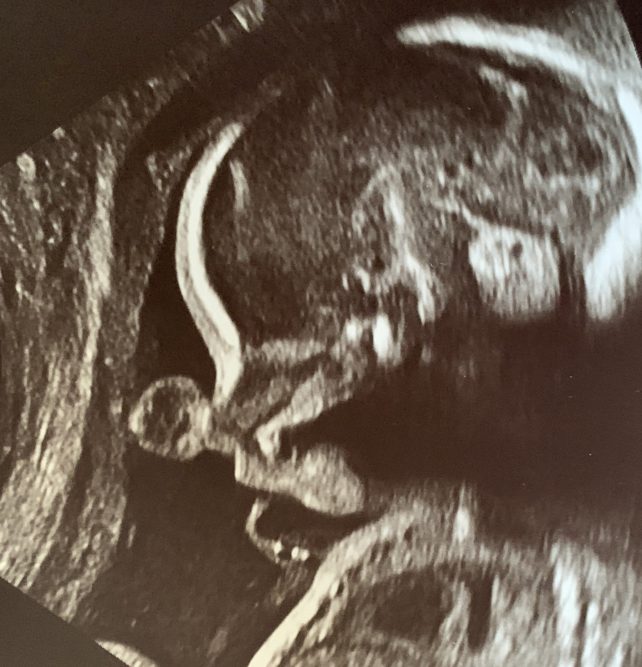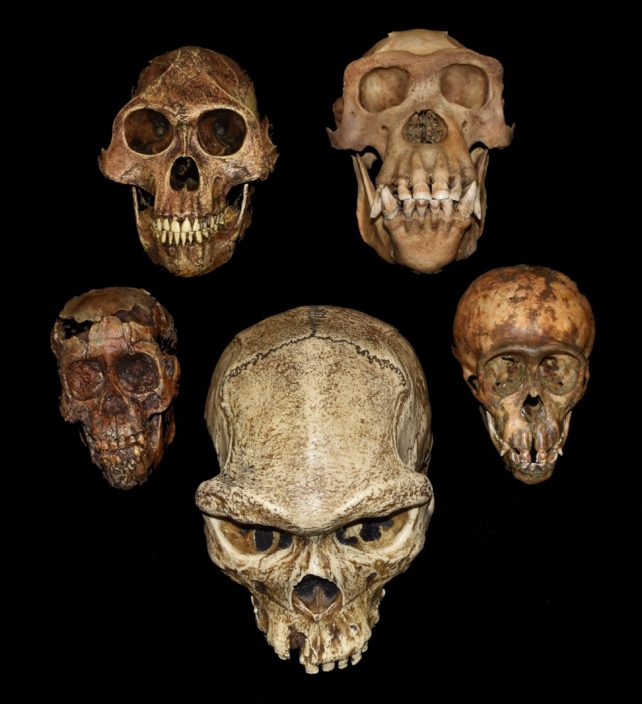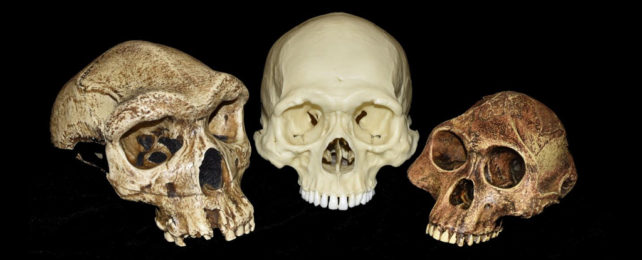Human babies pack a lot of growth into those nine months between conception and birth to give them and their meaty, complex brains a chance at survival.
Just how evolution came to grant humans such a comparatively rapid prenatal growth rate has never been clear.
Given how critical brain growth is to early human development, and head size, in turn, influences the size of our jaws, researchers suspected teeth may hold some valuable information on our ancestors' pregnancies.
Teeth begin to form at around 6 weeks of gestation but don't develop their hardened exterior layers until the second trimester. From there, the growing layers can retain records of their life history, from weaning to sexual activity.
"Dental remains are the most abundant parts in the fossil record," explains paleobiologist Leslea Hlusko from the Spanish National Research Center for Human Evolution (CENIEH) making teeth an ideal candidate for sussing out such biological mysteries, if a relationship between them and the process in question can be established.

The team's previous research in monkeys found slower growth of an unborn animal links to a lack of third molar development, so Hlusko, Western Washington University paleoanthropologist Tesla Monson, and colleagues measured the ratios between third and first molar length in primate species still alive today, to obtain the relative molar size.
They found that prenatal growth rate, head size, and relative molar size did indeed all follow the same pattern across all these primates. So they used this established pattern to delve into our evolutionary history, analyzing primate fossils spanning between 6 million to 12,000 thousand years ago, covering 13 hominid species.

Both cranial and dental remains indicate that prenatal growth rates increased over the last 6 million years. Along with fossilized pelvis and head anatomy, these findings support the theory that long human-like pregnancies evolved within the last few hundred thousand to million years, during the Pleistocene.
As primates transitioned to walking on two legs in the Early Pliocene around 5.333 million years ago, signs of which were starting to be visible in Australopithecus and Ardipithecus fossils, their prenatal growth rates were still more similar to the monkeys and apes alive today, than to ours.
But by the evolution of Homo erectus in the Early Pleistocene, about 2,580,000 years ago, there was a definite shift, which was also reflected in their pelvic anatomy.
"Changing pelvic anatomy, endocranial volume, and predicted prenatal growth rates all provide independent lines of evidence that support human-like pregnancy and birth evolving in the Pleistocene in the later Homo species, before the emergence of Homo sapiens," the team writes in their paper.
These changes coincide with expanding grasslands and herbivore populations, which may have provided the Homo genus with the extra resources needed to fuel the increase in neonatal size and longer maternal investment.
Advancements in tools that also occurred across this time may be a reflection of our ancestor's growing brain size, as well as the likely evolution of group hunting, which in turn would have provided even more resources.
"This feedback loop may have in turn allowed for the evolution of even larger brains and increased cranial capacity in later Homo, leading to H. sapiens," the team concludes.
This research was published in PNAS.
